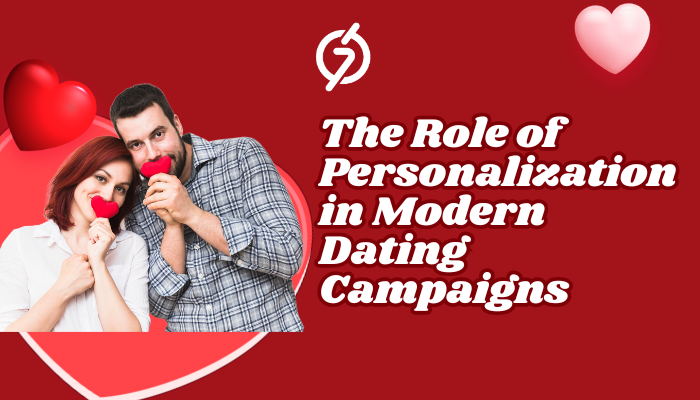Hook
Across digital advertising, few industries move as quickly as online dating. Global spending on dating advertising campaigns has grown year after year, fueled by platforms competing for attention in an increasingly saturated market. In fact, Statista projects that online dating revenue will cross $4 billion worldwide in 2025, and much of that growth is linked to advertisers’ ability to refine how they reach audiences.
Personalization is no longer an add-on for advertisers in dating campaigns it has become the central force separating meaningful engagement from wasted impressions. The challenge is no longer about showing an ad—it is about showing the right ad to the right user at the right moment.

Why Dating Advertisers Struggle
The modern advertiser targeting dating audiences faces an old but evolving obstacle: relevance. Unlike eCommerce or travel, dating is a deeply personal category where motivation, emotion, and timing are fragile. A generic dating ad campaign may attract clicks, but if it misses context—like showing a 25-year-old a message designed for divorced singles—the result is disengagement, low conversions, and wasted spend.
Advertisers often describe this as “spending a lot but not learning enough.” Budgets flow into impressions, but insights about audience behavior remain shallow because the creative strategy was too broad. In short, advertisers know people are seeking connection, but they lack the precision to meet users at that exact moment of intent.
Why Personalization Works in Dating Ad Campaigns
Here is where personalization shines. The strongest dating advertising campaigns are not those with the loudest visuals or biggest budgets—they are the ones where messaging feels like it belongs in the user’s story.
Consider two approaches:
- Generic campaign: “Find love today. Sign up now.”
- Personalized campaign: “Looking to meet like-minded professionals near you? Discover connections that fit your lifestyle.”
The first feels like background noise. The second speaks to an individual’s stage of life and environment. This is why advertisers who segment audiences—by location, relationship intent, age bracket, or even cultural nuance—consistently outperform those who don’t.
In fact, internal case studies from several ad networks show that online dating campaigns with dynamic personalization achieve click-through rates up to 2.5x higher compared to static creatives. This is not just about better ad design but about respecting the user’s context.
If you want to see how advertisers are innovating in this space, here’s a useful reference:
Smarter Personalization for Smarter ROI
Personalization in advertising does not need to mean over-engineering or invading privacy. It can be achieved through structured approaches that advertisers already have access to. A few proven tactics include:
- Dynamic Creative Optimization (DCO): Automatically adjusting ad creatives to align with real-time signals such as user location or device type.
- Segmented Messaging: Running parallel ad groups for audiences like young professionals, newly divorced singles, or LGBTQ+ daters ensures every group receives copy that resonates.
- Behavioral Targeting: Using intent-driven signals, such as past engagement with lifestyle content, helps position a dating service in the right context.
- Cultural Nuance: Adjusting tone, visuals, and offers for regional audiences increases trust and click depth, particularly in non-Western markets.
For advertisers, personalization is not a futuristic concept—it is already embedded in the best-performing dating advertising campaigns worldwide. The difference is in execution: those who fine-tune get measurable results, while those who rely on broad strokes face declining ROI.
If you’re considering scaling dating ads, you may also explore the right Dating Ad Network to help you segment and personalize campaigns effectively. Visit Dating Advertising solutions to learn how different placements can maximize audience match.
The Strategic Angle for Advertisers
The reason personalization in dating advertising campaigns is so critical comes down to two dynamics advertisers must respect:
- Emotional Investment: Dating decisions are tied to trust and vulnerability. Ads that feel “off” are not just ignored—they may actively damage brand credibility. Personalization minimizes that risk.
- Short Windows of Intent: Unlike buying shoes, dating intent can appear and disappear quickly. Advertisers who personalize messaging increase the odds of reaching a user at the exact point of decision.
Advertisers must start thinking of personalization not as “extra effort” but as an efficiency lever. Every dollar spent on broad targeting dilutes the signal. Every dollar spent on tailored creative sharpens it.
Turning Insight Into Action
Personalization is the lever that turns ordinary dating campaigns into meaningful, high-performing strategies. Advertisers who invest in contextual creative, segmented messaging, and smarter ad delivery see the long-term rewards—higher conversions, lower acquisition costs, and stronger audience trust.
If you are ready to test this approach for your own dating advertising campaigns, now is the right time to create an ad campaign that applies personalization strategies from the start.
Final Thoughts
The Role of Personalization in Modern Dating Campaigns is clear—it transforms advertising from guesswork into precision. The most effective advertisers are not the ones spending the most but the ones speaking most directly to their audience’s reality.
Dating ad campaigns are not about broadcasting but about connecting. For advertisers who understand this, personalization is not just an advantage—it is the new baseline.
 :
https://www.pinterest.com/7search_ppc_ads/
:
https://www.pinterest.com/7search_ppc_ads/

